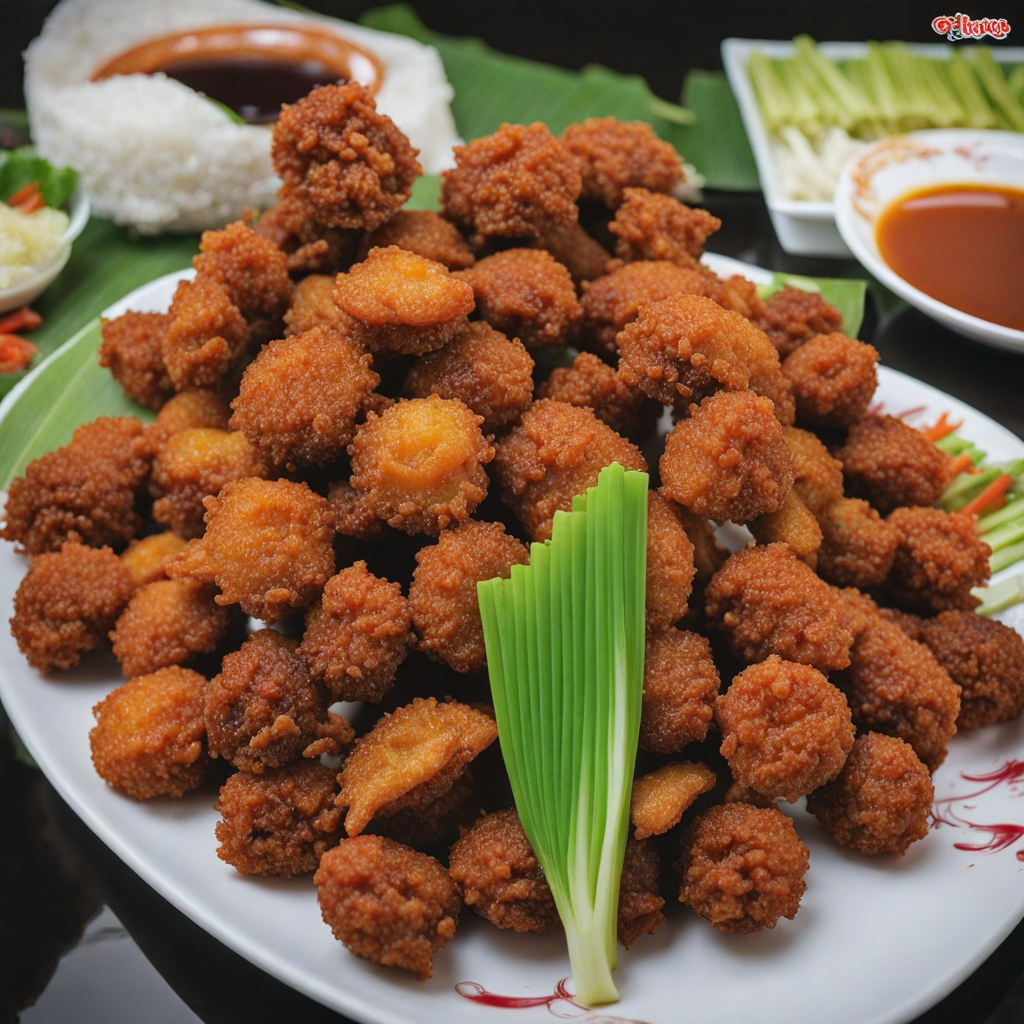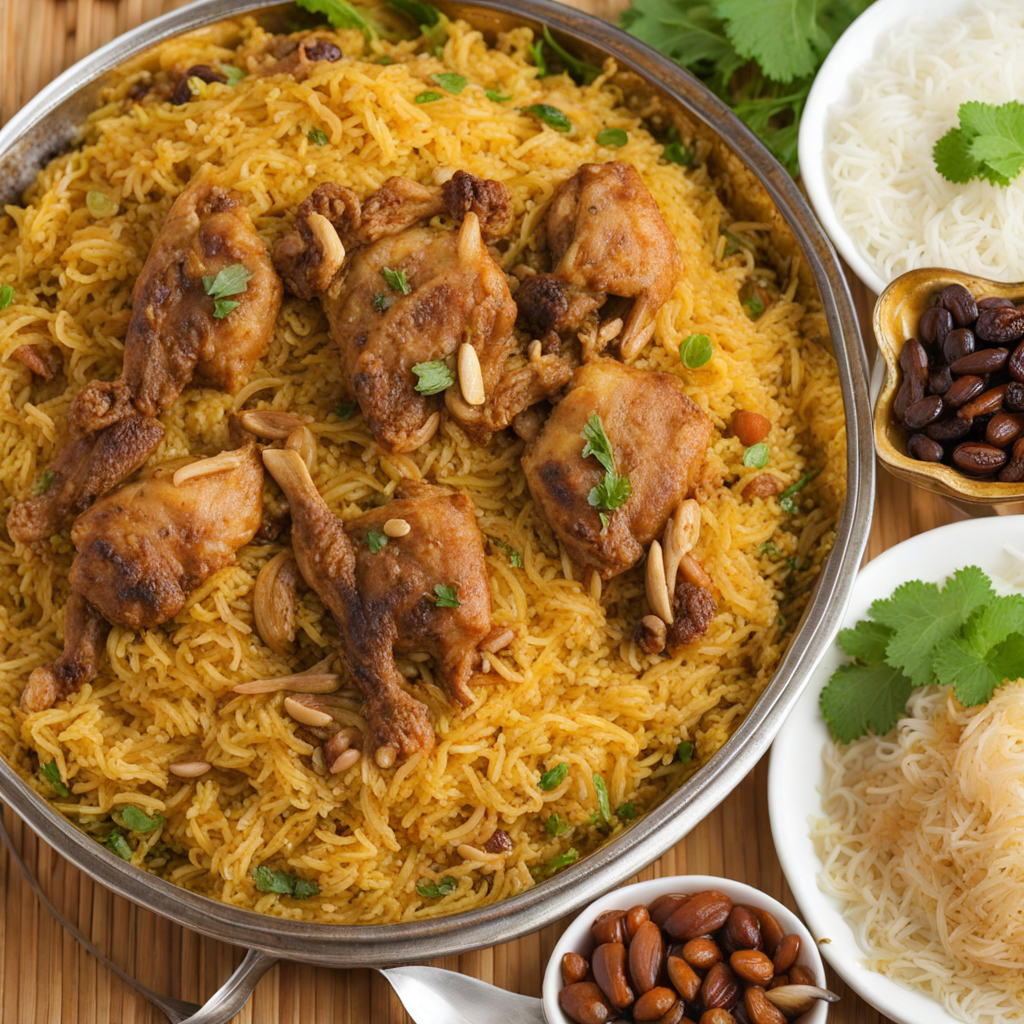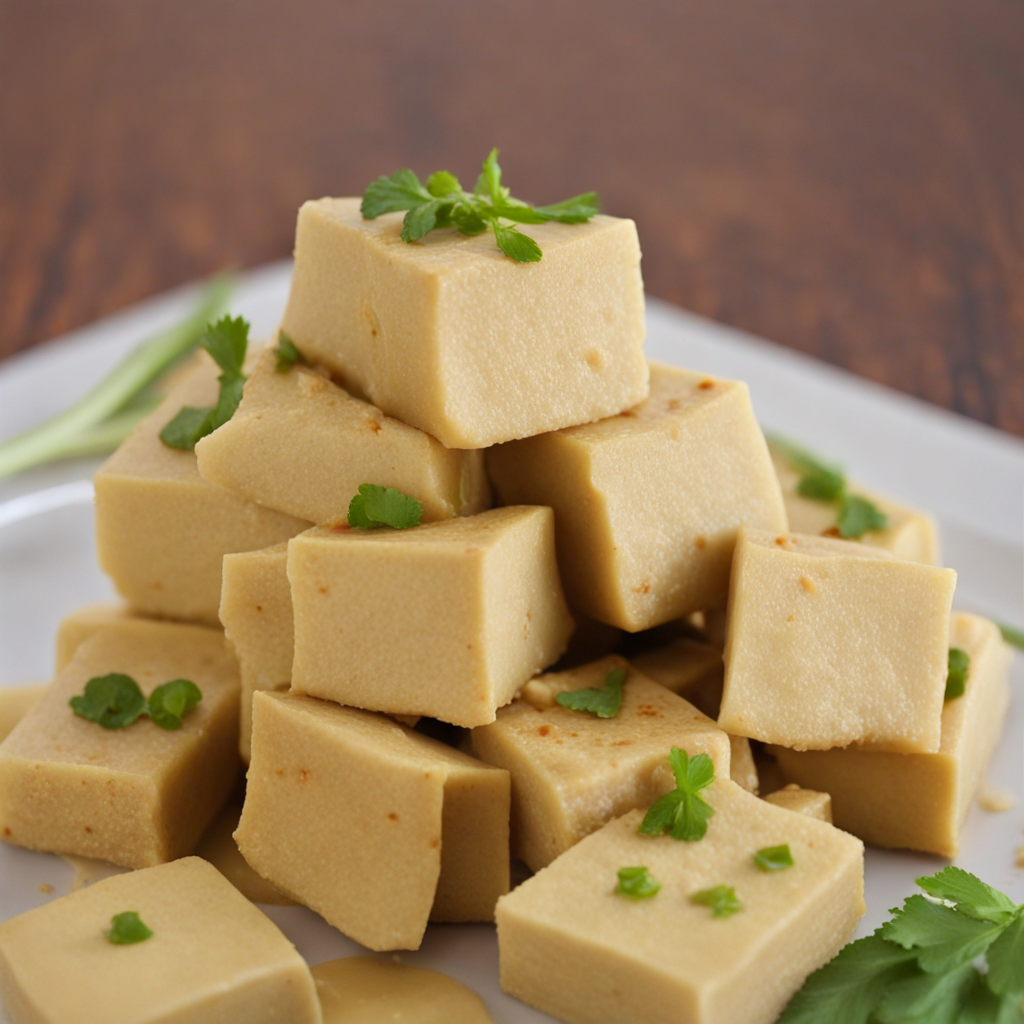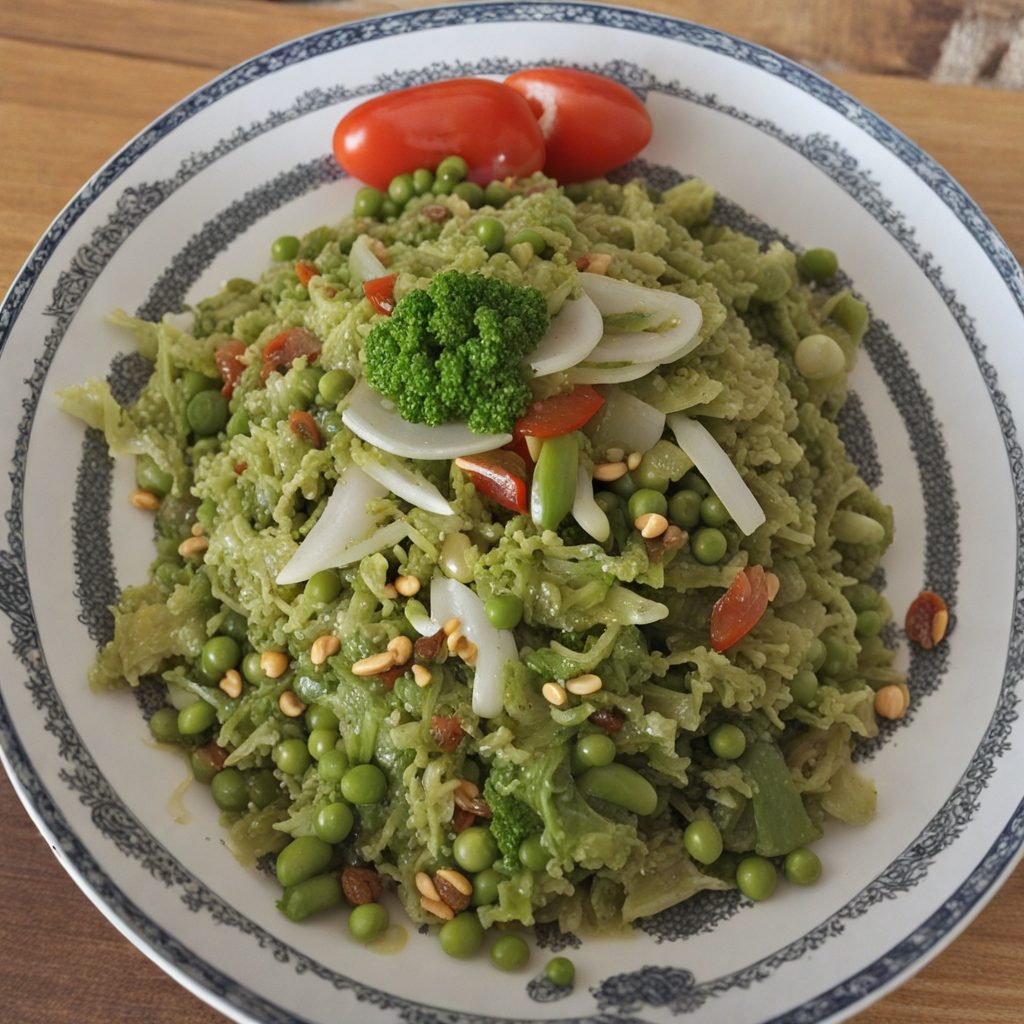Kyaw
Kyaw is a delightful and vibrant dish from Myanmar, often celebrated for its unique flavors and textures. It primarily consists of deep-fried fritters made from a variety of ingredients, with lentils, vegetables, or even fish being among the most popular. The base is typically a batter of chickpea flour, which gives the fritters a crispy exterior while remaining soft and flavorful on the inside. The addition of spices such as turmeric, garlic, and chili not only enhances the taste but also adds a beautiful golden hue to the dish, making it visually appealing. The preparation of Kyaw is an art in itself, as street vendors and home cooks alike take pride in their secret recipes. Each region may have its own twist, incorporating local vegetables like pumpkin, eggplant, or green beans, which infuse the dish with seasonal freshness. Served hot and crispy, Kyaw is often accompanied by a tangy dipping sauce made from tamarind or chili, perfect for balancing the richness of the fried batter. This combination of flavors makes it an irresistible snack or appetizer. Kyaw is more than just a dish; it represents the communal and celebratory spirit of Myanmar cuisine. Enjoyed in bustling markets or at family gatherings, it invites people to share and savor the moment together. This culinary experience is not just about the food itself but also about the connections it fosters, making it a must-try for anyone looking to explore the diverse and rich tapestry of flavors that Myanmar has to offer.
How It Became This Dish
The History and Cultural Significance of 'ကြော်' in Myanmar Introduction The dish known as 'ကြော်' (pronounced 'kyaw') is a quintessential part of Myanmar's culinary landscape. This versatile dish, which translates to "fried" in English, encompasses a variety of fried foods that have become staples in Myanmar's daily diet and social gatherings. From crispy fritters to fried noodles, 'ကြော်' represents the ingenuity and adaptability of Burmese cuisine while reflecting the country’s rich cultural heritage. Origins of 'ကြော်' The roots of 'ကြော်' can be traced back to the historical influences of trade and migration in Southeast Asia. Myanmar, situated at the crossroads of South and Southeast Asia, has experienced a melting pot of culinary traditions due to its geographical location. The early inhabitants of the region utilized local ingredients, such as rice, legumes, and various vegetables, to create dishes that would later evolve into the modern interpretations of 'ကြော်.' The introduction of Indian and Chinese culinary practices played a significant role in shaping 'ကြော်.' The British colonial period in the 19th century further influenced Myanmar's food culture, introducing new cooking techniques and ingredients. The arrival of fried snacks, such as samosas and spring rolls, can be attributed to this colonial exchange, which melded with local practices to create unique versions that are now integral to Myanmar’s cuisine. Cultural Significance In Myanmar, food is much more than sustenance; it is a vital part of social interactions, festivals, and family gatherings. 'ကြော်' embodies this cultural essence, often served during celebrations, religious ceremonies, and communal feasts. The act of sharing fried foods symbolizes togetherness and community spirit, making it an essential element of social life. The significance of 'ကြော်' is particularly evident during traditional festivals. For instance, during the Thingyan Festival, which marks the Burmese New Year, various fried delicacies are prepared and enjoyed as part of the celebrations. This festival not only highlights the importance of culinary traditions but also reinforces familial bonds as people come together to prepare and share food. Moreover, 'ကြော်' serves as a street food staple in Myanmar. Vendors selling fried snacks can be found in bustling markets and street corners, making it accessible to all socioeconomic classes. The casual nature of street food culture allows for communal dining experiences where people from different walks of life converge, further solidifying 'ကြော်' as a unifying force within the diverse tapestry of Myanmar society. Development Over Time The evolution of 'ကြော်' reflects broader trends in Myanmar’s history and societal changes. In the early 20th century, as urbanization began to take hold, the demand for quick, affordable meals increased. Fried foods, being easy to prepare and consume, became popular among the working class. The proliferation of street food vendors during this time marked a shift in how food was consumed, moving from more formal dining experiences to casual, on-the-go meals. As globalization took root in the late 20th and early 21st centuries, the culinary landscape of Myanmar began to incorporate international influences. While traditional recipes remained rooted in the culture, new flavors and techniques were introduced, leading to innovative interpretations of 'ကြော်.' For example, the incorporation of Western-style ingredients, such as cheese and processed meats, into traditional fried dishes reflects a fusion of culinary practices that cater to evolving tastes. Additionally, the rise of social media has transformed how 'ကြော်' is perceived and consumed. Platforms like Facebook and Instagram have allowed local vendors to showcase their creations, attracting both locals and tourists. This newfound visibility has led to a resurgence of interest in traditional fried foods, with many young chefs experimenting with modern twists on classic recipes. The entrepreneurial spirit among the youth has also given rise to food trucks and pop-up restaurants that focus exclusively on 'ကြော်,' further expanding its reach and appeal. Variations of 'ကြော်' One of the most fascinating aspects of 'ကြော်' is its diversity. The term encompasses a wide range of fried dishes, each with its unique preparation methods and flavors. Some of the most popular variations include: 1. Burmese Fritters (ကြော်ထမင်း): Made from a batter of chickpea flour or rice flour, these fritters are often filled with vegetables, such as onions, potatoes, or green chilies. They are deep-fried until crispy and served as a popular snack or appetizer. 2. Fried Noodles (ကြော်မြန်မာ): A beloved street food, fried noodles are typically prepared with thin rice noodles stir-fried with vegetables, eggs, and sometimes meat or tofu. The dish is seasoned with soy sauce and garnished with fresh herbs, making it a delightful and satisfying meal. 3. Tempura-like Dishes (ကြော်သုပ်): These dishes utilize a similar style to Japanese tempura, where vegetables and seafood are lightly battered and fried. The result is a crunchy exterior that contrasts with the tenderness of the filling. 4. Sweet Fried Snacks (ကြော်မြည်း): In addition to savory options, Myanmar boasts a variety of sweet fried snacks. One such treat is 'baw zaung,' a deep-fried sweet made from glutinous rice flour and filled with a mixture of jaggery and coconut. Conclusion The history of 'ကြော်' in Myanmar is a testament to the country's rich culinary heritage, marked by cultural exchanges, social significance, and adaptability. From humble beginnings influenced by trade and migration to a modern street food phenomenon, 'ကြော်' has woven itself into the fabric of daily life in Myanmar. It serves not only as a source of nourishment but also as a symbol of community and cultural identity. As Myanmar continues to evolve, so too will its beloved fried foods, ensuring that 'ကြော်' remains a cherished part of its gastronomic legacy for generations to come.
You may like
Discover local flavors from Myanmar







